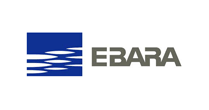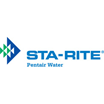In commercial fire safety, certain elements often take the spotlight. Most people are familiar with smoke detectors, sprinkler systems, and fire extinguishers. Yet, one crucial component often works behind the scenes, always ready to spring into action when needed. We are talking about Pennsylvania Fire Pumps.
Keeping Buildings and People safe
Sprinkler systems are lifesavers that rely on fire pumps to deliver water throughout the building, automatically dousing flames before they spread. Also, firefighters connect hoses to standpipes, which receive pressurized water from a fire pump.
This allows firefighters to attack the fire directly from different floors within a building. In specific situations, a Pennsylvania Fire Pump can also supply water for foam-based fire suppression systems, especially for flammable liquid fires.
Like any crucial equipment, fire pumps require regular maintenance and testing. Qualified technicians inspect these pumps to ensure they’re in optimal condition and ready to perform when needed. Building owners and fire safety professionals are vital in ensuring these inspections are conducted routinely.
What is a Fire Pump and What Does it do
Pennsylvania Fire Pumps may not be as immediately recognizable, but they are the unsung heroes of fire protection systems. Unlike standard pumps, these pumps are designed to increase the water pressure for a fire sprinkler or standpipe system. They play a vital role in ensuring the safety from fire in industrial, commercial, and residential buildings.
When a fire breaks out, the pump activates automatically, boosting water pressure to extinguish the flames effectively. There are various types of fire pumps, each designed for specific applications and settings.
- Electric Motor-Driven Fire Pumps: These are the most common type of Pennsylvania Fire Pumps powered by electric motors. They are suitable for indoor settings.
- Diesel Engine-Driven Pumps: In areas where electricity supply might be unreliable or non-existent, diesel engine-driven pumps provide a dependable alternative.
- Horizontal Split-Case Pumps: Known for their efficiency and ease of maintenance, horizontal split-case pumps feature a split casing and allow for easy maintenance.
- Vertical Inline Pumps: These have a compact design, making them best for tight spaces. They’re common in high-rise buildings and industrial facilities.
What Sets Fire Pumps Apart from Normal Pumps?
Pennsylvania Fire Pumps are the backbone of fire protection systems, ensuring a steady flow of water reaches sprinklers and firefighter hoses when a blaze erupts. These pumps aren’t your average garden hose pumps. They are specifically designed to handle the demanding task of firefighting. Here’s what sets them apart from standard pumps:
- Powerhouse Performance: Municipal water pressure often isn’t enough for sprinkler systems, especially in tall buildings. This is where Pennsylvania Fire Pumps take that pressure and significantly boost it.
- Built to Last: These pumps are constructed with heavy-duty materials to withstand the intense pressure and potential heat exposure during a fire. Thus, they are built to function flawlessly in emergencies.
- Safety Features: Unlike standard pumps, Pennsylvania Fire Pumps have various safety features to protect against potential failures. These may include automatic start-up mechanisms, pressure relief valves, and monitoring systems.
Pennsylvania Fire Pumps may not be glamorous, but their role in fire safety is undeniable. They provide the water pressure to extinguish fires, protecting lives and property. So, the next time you walk through a high-rise building in Pennsylvania, spare a thought for the unsung heroes keeping you safe. If you want to invest in Pennsylvania Fire Pumps, we can help you choose the right pump for your fire pump system. Connect with us now!













